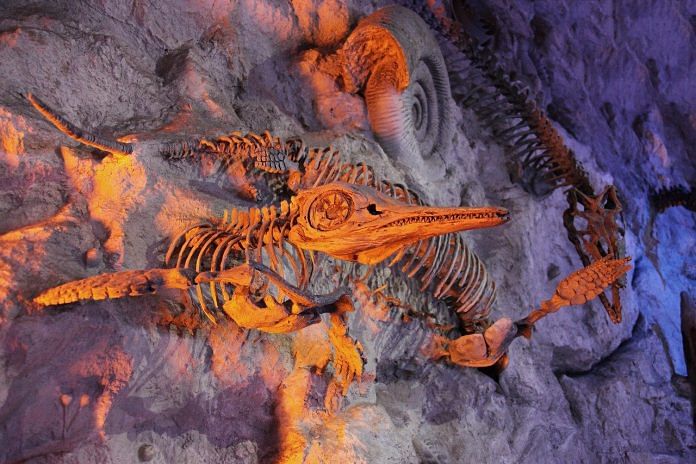Scientists have discovered the 70-million-year-old remains of a megaraptor in Argentina, which means this dinosaur may have been one of the last carnivorous ones on the planet. The team found fossils, measuring 10 m, in the southern province of Santa Cruz in March this year.
Megaraptors were slimmer than the Tyrannosaurus rex, and were built for speed, with long tails that enabled them to maintain balance. They had muscular, elongated legs with which they could take long steps. “The defining characteristic of megaraptors was that they had very long arms and that their thumb ended in a claw of approximately 15 inches,” said paleontologist Fernando Novas. More on NY Post.
Massive 1.5-billion-year-old disk galaxy discovered
Scientists have spotted a massive, rotating disk galaxy that first formed 1.5 billion years after the Big Bang, and could change our understanding of the galaxy formation.
Traditionally, galaxies are built from halos of dark-matter, a mysterious form of matter thought to account for about 85 per cent of the matter in the universe. Over time, these halos pull in gases and material, eventually building up full-fledged galaxies. This process usually takes a very long time.
However, the newly discovered galaxy DLA0817g, nicknamed the Wolfe Disk, which scientists believe formed in the early universe, suggests that some galaxies could actually form quite quickly. Researchers found that the disk was just 1.5 billion years old and about 70 billion times the mass of our sun. More on Space.
Climate change turning Antarctica’s snow green
The ongoing climate crisis and warming temperatures due to climate change are turning the snow in Antarctica increasingly green, according to a new study, and this ‘green snow’ is now visible even from space. Using data collected over two years by the European Space Agency’s Sentinel 2 satellite, a research team from the University of Cambridge and the British Antarctic Survey have created the first map of the algae blooms on the Antarctic Peninsula coast.
Mosses and lichens are seen as the major photosynthetic organisms in Antarctica, but the new research found 1,679 separate algal blooms that are vital for Antarctica’s ability to capture carbon dioxide from the atmosphere. Researchers are now planning to conduct similar studies to map red and orange algae in Antarctica. More on Reuters.
Bumblebees can trick plants into flowering early
Researchers have found that bumblebees nibble on the leaves of flowerless plants, which seems to make plants flower early.
The damage done to leaves by bumblebees, in the absence of pollen, seems to fool the plant into flowering early, some up to a full month earlier than usual. Scientists have tried to replicate this trick in the laboratory, but without success.
It is possible that the bees also have some cue that they are providing to the plants that is specific to the bee. The team notes that when pollen is available, the bees don’t damage plants, and have found this behaviour in wild bees. More on the BBC.



